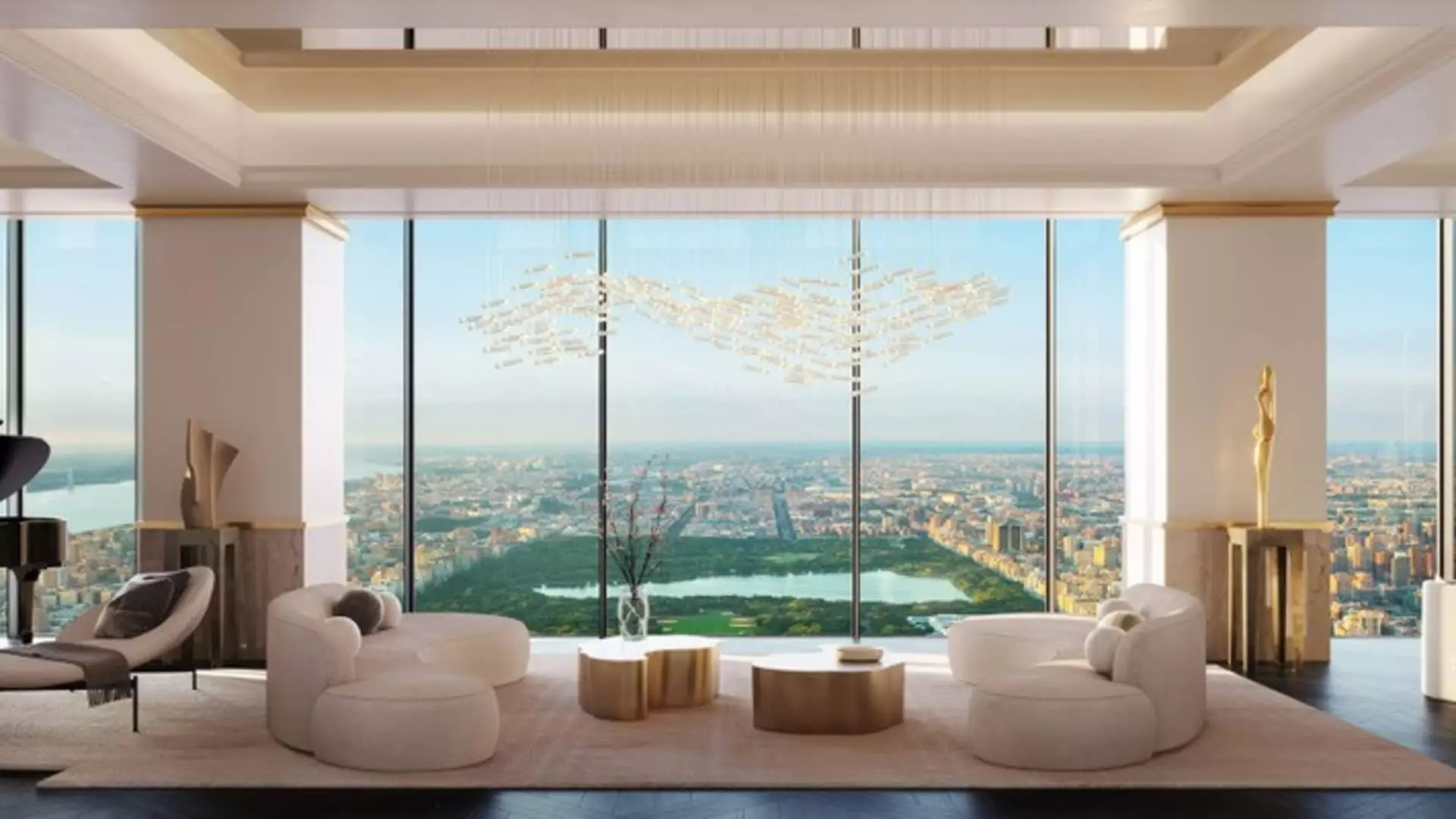In a marketplace where the elite often dance above the clouds, the new $110 million penthouse atop Steinway Tower in Manhattan has drawn a spotlight that illuminates both the glitter and the cracks of luxury real estate. Launched amid national financial chaos, where the Dow Jones Industrial Average suffered severe losses—over 4% in a single day—this ostentatious listing serves as a stark contrast to the turbulence felt below. Such moments raise essential questions about the resilience of ultra-prime properties and whether luxury real estate can maintain its allure even as the winds of economic change blow cold.
The market volatility, brought on by tariffs and shifting trade policies, seems to have a bafflingly minimal effect on certain high-end buyers. Sotheby’s International Realty broker Nikki Field asserts that her clientele remains undeterred. For them, the valuation of luxury homes isn’t only about current market conditions but rather about curating a portfolio that also doubles as status symbolism. However, this defiance against the tide of economic uncertainty begs the question: are these buyers truly immune or merely living in a gilded bubble?
Ambitious Listings in Uncertainty
The Steinway Tower offering is not just any luxurious abode; it’s marketed as a quadplex, inviting a level of exclusivity that has not been seen before. Spanning over 11,000 square feet and with sweeping views of Central Park, the allure is undeniable. But as Jonathan Miller, a respected expert in real estate appraisal, warns, such extravagant listings are becoming more commonplace—thus diluting their initial rarity.
While the idea that a $110 million penthouse could shift the paradigm of luxury real estate might be tempting, the reality is that such sky-high valuations must be evaluated against broad market fluctuations. Miller’s comment that we’re seeing a percolation of high-value sales, averaging four high-end purchases a year in the U.S., brings about a sobering perspective. Is the market truly moving forward, or are we simply observing the same marketing stunts that once characterized high-end real estate, now dressed up as progress?
Who Holds the Key to the Luxury Market?
There’s no denying that the elite class holds a significant share of wealth in the market, but their focus on security may not always align with speculative purchases during uncertain times. A recent report highlighted that a considerable chunk of the assets held by the wealthiest 10% lie in the stock market. With economic uncertainties looming over their investments, it’s no wonder some are looking towards real estate as a safer bet.
However, the intricate flip-side shows that this group is also riddled with indecision. As luxury broker Noble Black pointedly remarks, uncertainty is the worst enemy of real estate. Compounding this unease are fears that tariffs could inflate property values, creating a hesitation among buyers directing their funds out of the stock market and into real estate. Such conflicting sentiments are emblematic of an anxious market where buyers are evaluating not just properties, but the very nature of stability itself.
A Market Divided: Strategies Amid Uncertainty
The luxury real estate sector finds itself in a pronounced state of bifurcation. As brokers like Aaron Kirman note, buyers are increasingly cautious while sellers seem stuck in a romanticized view of what their properties are worth, aiming for the inflated prices of yesteryear. This fundamental disconnect creates a bottleneck where transactions become few and far between, unless properties are adjusting their pricing to meet realistic market conditions.
Moreover, lengthened sale timelines are indicative of the higher stakes involved in today’s transactions. Former six-month sales cycles have now stretched considerably, unless sellers provide a prototype property that aligns seamlessly with potential buyers’ desires. The emphasis on negotiating clean terms and favorable conditions reflects a market in transition, where every stakeholder is forced to pivot and adapt.
Rarity vs. Reliability: The Real Estate Tug-of-War
As the luxury market evolves, new strategies emerge. There is a clear distinction between buyers within the $5 million to $10 million range, who are hyper-focused on value and quality, and those in the stratospheric tiers of $20 million and above, who seek rarity and unique experiences. For these high-net-worth individuals, traditional metrics of value hold less sway; they’re hunting for trophy properties offering irreplaceable waterfront views and bespoke features rather than merely price tags.
This dual mindset among buyers reveals a critical epiphany: what constitutes value in real estate is no longer merely about lavish amenities or square footage but involves a nuanced understanding of lifestyle, exclusivity, and potential growth amidst uncertainty. As economic factors continue to loom large, it’s essential for market participants to reconcile the importance of status symbols with the need for reliable investments. Thus, the luxury market’s future depends not just on the grandiose listings, but on its ability to adapt and respond to the underlying concerns of its affluent clientele.

